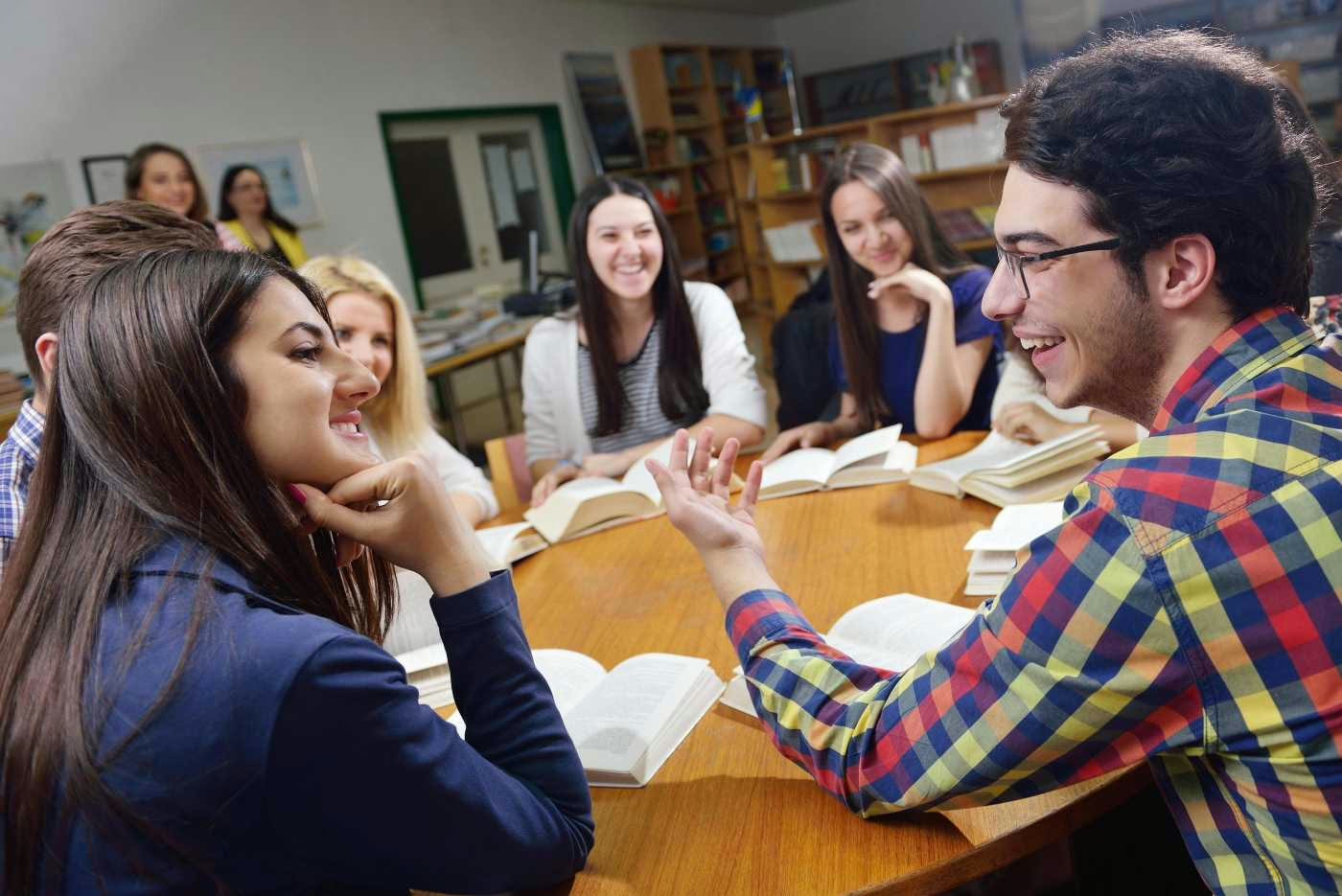Going back to high school in 2025 comes with a mix of new trends and timeless traditions. While modern classrooms are filled with laptops, smartboards, and flexible learning spaces, some classic questions still pop up every year—like do high schoolers use college ruled or wide ruled notebooks, and do high schoolers get a school supply list before the first day? Knowing the answers to these can help you shop smarter, avoid last-minute stress, and start the year prepared. Whether you’re a freshman stepping onto campus for the first time or a senior gearing up for graduation, here’s what to expect when heading back to high school this year.
Let’s take a look at a few recommendations on what to expect when you go back to high school in 2025.
Academic Changes and Expectations
Returning to high school in 2025 means students will encounter an evolving curriculum and innovative teaching methods designed to prepare them for the future better better. Rather than relying solely on traditional lectures and standardized content, many schools are embracing personalized learning paths, integrating technology, and offering more student-directed projects to engage learners on a deeper level.
These changes aim to foster critical thinking, adaptability, and collaboration among students, ensuring they are equipped for the demands of higher education and the modern workforce. As a result, students should expect a dynamic classroom environment that values active participation and encourages independent inquiry.
Managing increased homework and assessment pressures
Along with curriculum updates, students can anticipate a noticeable increase in homework assignments and assessment pressures as academic standards rise. Teachers and administrators are focusing on rigorous, on-grade-level instruction that challenges students to perform at their highest potential. This shift may result in more frequent formative assessments, cumulative projects, and comprehensive exams designed to track progress and identify areas for improvement.
To navigate these heightened expectations, students will need to develop effective time management and self-assessment skills. Key strategies that can help include:
- Setting up dedicated study schedules to manage workloads
- Breaking assignments into manageable tasks
- Using school-provided resources for academic support
Do high schoolers get a school supply list?
When it comes to school supplies, high school students will notice a shift from the standardized lists commonly seen in earlier grades. Most high schools do not provide a universal supply list before classes start because the required materials are often specific to each student’s chosen courses. Instead, teachers typically inform students about necessary supplies during the first week of school, after students settle back to high school and course schedules are finalized.
This system allows for more flexibility and ensures that students only purchase what they truly need for their particular classes, making back-to-school shopping more targeted and efficient.
However, there will always be a certain few required materials you should prepare to have on hand before setting foot into the high school doors.
- Notebooks – do high schoolers use college ruled or wide ruled? Middle school, high school, and college students use medium or college ruled paper, with 9/32 inch spacing between lines.
- Pens and pencils – you will need both. Pencils are useful for rough drafts and sketching, while pens are preferred for permanent work that may be passed around and change hands.
- Backpack – useful for carrying around your notebooks, pens, pencils, and textbooks, as well as snacks and a water bottle.
- Lunch box – a necessity for bringing food from home for everyone’s second favorite ‘class’ after recess – lunchtime!
- Clothing – wearing clothes from the prior year is fine, but sometimes people grow or shrink, and very often trends change. Consider grabbing a few new outfits to show you’re in sync with the latest fashion trends.
Shop back to high school supplies on Amazon.
Social Dynamics and Relationships
Reconnecting with old friends and forging new relationships is a hallmark of returning to high school, especially after a significant time apart. Many students find comfort in rekindling bonds with classmates they haven’t seen in months, reminiscing about shared experiences or inside jokes that instantly reignite a sense of belonging.
At the same time, high school offers fresh opportunities to expand your social circle by meeting students from different classes, clubs, or backgrounds—a process that can be both exciting and nerve-wracking. For some, the transition may feel awkward, especially if friendships have faded or everyone seems changed by the passage of time; however, focusing on shared memories and being open to new connections can ease this process.
Navigating peer pressure and group dynamics
Navigating peer pressure and group dynamics is an inevitable part of the high school experience, and learning to do so effectively is a critical skill for personal growth. Peer influence is pervasive, with studies showing that a vast majority of teens—up to 90%—admit to being affected by the choices and opinions of those around them.
This influence is not always negative, as positive peer interactions can encourage empathy, inclusivity, and healthy habits; however, students may also encounter pressure to conform to group norms, participate in risky behaviors, or exclude others. Recognizing these dynamics and developing strategies to assert personal values while maintaining respectful relationships can empower students to thrive socially when they go back to high school in 2025.
Managing conflicts and building healthy relationships
Managing conflicts and building healthy relationships are essential components of a successful high school journey, as daily interactions often involve navigating disagreements, misunderstandings, or even bigger disputes. Practical conflict resolution skills are invaluable tools for transforming potential arguments into opportunities for growth. Next time you find yourself in a disagreement, try strategies such as:
- active listening
- expressing your feelings calmly
- seeking compromise
Furthermore, prioritizing healthy communication, setting boundaries, and showing empathy not only strengthens friendships but also supports overall mental well-being. As students learn to approach social challenges constructively, they cultivate resilience and lay the groundwork for positive relationships both in and out of school.
Extracurricular Activities and School Involvement
Returning back to high school in 2025 brings an exciting array of extracurricular opportunities, with students encouraged to explore a diverse selection of clubs, sports, and organizations. Schools are increasingly expanding their offerings to include everything from traditional athletic teams and arts clubs to robotics, debate, and cultural affinity groups, ensuring there is something for every interest and passion.
Joining these groups not only helps students discover new hobbies but also allows them to connect with like-minded peers and broaden their perspectives. Highlights of school involvement opportunities include:
- Academic and special interest clubs, such as:
- science clubs
- language societies
- student government
- Athletic teams ranging from mainstream sports to emerging activities like esports
- Community service organizations and leadership councils
- Creative outlets through music, drama, and visual arts groups
Participating in these organizations enables students to develop lifelong friendships, expand their skill sets, and become more engaged members of the school community.
Balancing extracurricular commitments with academics
While the prospect of joining multiple extracurricular activities is enticing, finding the right balance between these commitments and academic responsibilities is crucial for student success. A well-organized schedule helps prevent burnout and ensures that academic performance remains strong alongside extracurricular involvement. Effective strategies for balancing these commitments include prioritizing activities that align with personal goals, communicating with teachers and coaches about workloads, and utilizing organizational tools such as planners or digital calendars.
Additionally, students can benefit from setting limits on the number of activities they join to avoid overextending themselves. By creating a realistic and flexible schedule, students can enjoy the benefits of extracurricular pursuits without compromising their academic achievements.
Developing leadership and teamwork skills through participation
Participation in extracurricular activities is a powerful way to cultivate leadership and teamwork skills, both of which are highly valued in educational and professional settings. Through roles such as club officer, team captain, or project leader, students gain firsthand experience in organizing events, resolving group challenges, and motivating peers toward common goals. These experiences foster a sense of responsibility, enhance communication skills, and help individuals learn to work effectively within diverse teams.
Furthermore, involvement in such activities provides opportunities for students to: – Practice decision-making and problem-solving in real-world scenarios – Build confidence in public speaking and group presentations – Receive mentorship from faculty advisors or community leaders. Over time, these skills not only contribute to personal growth but also help students stand out in college applications and future career pursuits.
Take Aways
As students prepare to return back to high school in 2025, they can anticipate a dynamic environment marked by evolving academic expectations, vibrant social interactions, and diverse extracurricular opportunities. Embracing new curricula and teaching methods will challenge students to adapt and grow academically, while navigating social relationships will foster personal development and resilience. Engaging actively in clubs, sports, and leadership roles will not only enrich their high school experience but also cultivate essential skills for the future.
Going back to high school in 2025 means navigating a blend of new learning tools and familiar routines. Alongside modern updates like digital resources and flexible schedules, you’ll still face those classic back-to-school questions—do high schoolers use college ruled or wide ruled paper, and do high schoolers get a school supply list before the year begins? Having these answers ahead of time helps you shop efficiently, stay organized, and step into the first day ready for success. With the right preparation, this school year can be your most confident and productive yet.
Read more: Grunge Fashion: Everything You Need to Know » CNBC Posts


